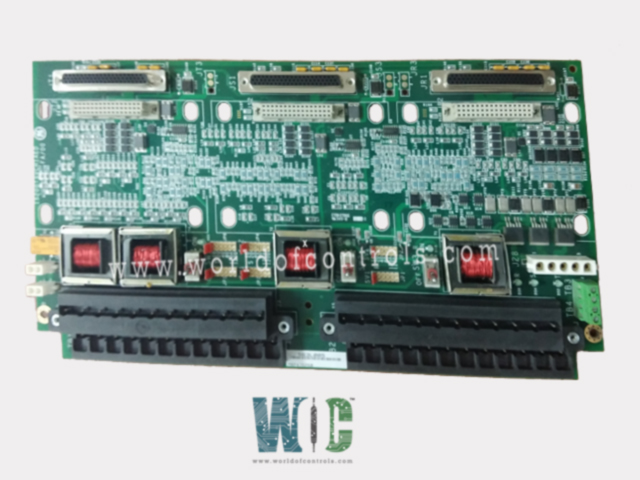
World Of Controls understands the criticality of your requirement and works towards reducing the lead time as much as possible.
IS200TSVCH1AJE - Servo Input/Output Terminal Board is available in stock which ships the same day.
IS200TSVCH1AJE - Servo Input/Output Terminal Board comes in UNUSED as well as REBUILT condition.
To avail our best deals for IS200TSVCH1AJE - Servo Input/Output Terminal Board, contact us and we will get back to you within 24 hours.
SPECIFICATIONS:
Part Number: IS200TSVCH1AJE
Manufacturer: General Electric
Series: Mark VIe
Product Type: Servo Input/Output Terminal Board
Number of Channels: 13 probes
Probe Power: -24 V dc
Span: -8 mV to +45 mV
Operating temperature: 0 to +45°C
Size: 33.0 cm high x 17.8 cm
Repair: 3-7 Day
Availability: In Stock
Country of Origin: United States
Manual: GEH-6721G
FUNCTIONAL DESCRIPTION:
IS200TSVCH1AJE is a Servo Input/Output Terminal Board manufactured and designed by General Electric as part of the Mark VIe Series used in GE Distributed Turbine Control Systems. The Servo Input/Output terminal board connects two electro-hydraulic servo valves responsible for operating the steam or fuel valves, with valve positions monitored through linear variable differential transformers (LVDTs). This TSVC model is specifically compatible with the PSVO I/O pack and the WSVO servo driver but is incompatible with the VSVO processor. Designed for simplex, dual, and TMR control setups, it receives three 28 V DC power supplies through connector J28, while connectors JD1 or JD2 allow external tripping from a protection module. In the TSVCH2 configuration, isolation transformers T1 through T4 are removed, so there is no galvanic isolation between the WSVO excitation driver output and the LVDT/R position sensor.
INSTALLATION:
Sensors and servo valves connect directly to two I/O terminal blocks, each secured by two screws and providing 24 terminals that accommodate wiring up to #12 AWG. A shield terminal strip, grounded to the chassis, is positioned just to the left of each terminal block. External trip connections are made via JD1 or JD2 plugs. Each servo output can support up to three coils in a TMR setup, with coil current for Servo 1 and Servo 2 adjusted by jumpers JP1, 3, 5, and JP2, 4, and 6, respectively.
OPERATION:
The TSVC servo terminal board features two channels, each including bi-directional servo current outputs, LVDT position feedback, LVDT excitation, and pulse rate flow inputs. It supplies excitation for and receives inputs from up to eight LVDTs for valve position feedback, with an option to use one to four LVDTs per servo control loop. The two pulse rate inputs serve to measure fuel flow in gas turbines. Each servo output incorporates an individual suicide relay, managed by firmware, that grounds the PSVO output signal when deactivated and returns to standard operation after a manual reset. Diagnostic functions continuously monitor each servo's voltage, current, and relay status.
WOC has the largest Stock of GE Distributed Control System Replacement Parts. We can also repair your faulty boards and supply unused and rebuilt boards backed up with a warranty. Our team of experts is available round the clock to support your OEM needs. Our team of experts at WOC is happy to assist you with any of your automation requirements. For pricing and availability on any parts and repairs, kindly contact our team by phone or email.
What is the TSVC servo terminal board used for?
The TSVC servo terminal board interfaces with electro-hydraulic servo valves to control steam and fuel valves, providing channels for servo current, LVDT feedback, LVDT excitation, and pulse rate inputs for fuel flow monitoring.
What kind of diagnostics does the TSVC board offer?
The TSVC board has built-in diagnostics that continuously monitor each servo's voltage, current, and suicide relay status, ensuring real-time feedback on the health and functionality of the servo systems.
How does the TSVC handle current settings for servo coils?
Current settings for each servo’s coil can be adjusted using jumpers. JP1, 3, and 5 adjust Servo 1, while JP2, 4, and 6 are used for Servo 2.